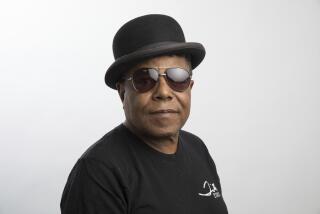‘Bodies’ exhibit in search of a home
Helen Reynolds summed up “Bodies: the Exhibition” in Buena Park this way: “Cool — but kind of grosses me out.”
That assessment came even before the 14-year-old freshman at Ocean View High School in Huntington Beach had gotten to the cirrhotic liver, diseased from alcohol abuse, the dark and enlarged lungs of a smoker, or the array of glass-jar-encased fetuses, each arrested at a particular stage of development — 24 weeks, 22 weeks, 20 weeks, 18, and so on.
That is not to suggest that the exhibit is morbid, freakish or even frivolous, as it sits in the shadow of the tall rides of nearby Knott’s Berry Farm. For many, it’s serious business.
The anatomy expert who designed the exhibition is emphatic about the educational purpose.
“Can you imagine what they have learned?” Roy Glover said of the 300,000 people who have visited “Bodies” since it opened on Beach Boulevard in August 2013. (It opened in the U.S. in 2005 in Tampa, Fla., having come from a showing in Blackpool, England, the year before.)
“People have decided to quit smoking when they see what happens to the lungs and eat healthier when they see what plaque can do to their heart, and drink less because they see that their liver can become fibrotic and function ineffectively. And they learn the language of the body so that when they go to the doctor, they can communicate more effectively.”
But the exhibition is in its final days in Buena Park. It is expected that it will be hosting its last visitor on Jan. 3.
In May 2007, the city’s now-defunct Redevelopment Agency acquired the 8.74-acre site of the former Movieland Wax Museum when no retail developer could be found to take it over.
In February 2013, Buena Park entered a lease with Premier Exhibitions for 38,000 square feet of building space for the Atlanta-based company’s “Bodies” and Titanic displays.
The lease expired in January 2015, but Premier has been continuing on a month-to-month basis, said Ruben Lopez, the city’s economic development administrator.
Under the agreement with the city, he said, Premier has been paying $1 per month while absorbing about $80,000 in annual maintenance costs. Premier spent more than $1 million on renovations, Lopez added.
But now a new tenant is ready to take over. Butterfly Pavilion LLC wants 50,000 square feet of building space for a grand lobby with aquarium, restaurant and retail area; a 3-D movie theater showing the flight of the monarch butterfly; and an atrium where thousands of live butterflies will flutter around, said Lopez.
The loss of “Bodies: the Exhibition” — not to be confused with the separate “Body Worlds” — is sure to break more than a few hearts in education.
On a recent Wednesday, busloads of students were arriving to take the guided tour.
Kelly Lee, a teacher of Advanced Placement biology at Costa Mesa High School, has brought four groups in three years to the “Bodies” exhibition.
Her students could be seen filling out worksheets, placed against walls for writing support, as they traveled from area to area, first the skeletal room, where they viewed not just bones but related medical conditions like osteoarthritis, osteoporosis and bone cancer, and on to the muscular, circulatory, respiratory and digestive systems.
“It’s a bummer for us because it’s been a great field trip,” Kelly said about the impending closure.
Behind her group were the Costa Mesa High students of biology teachers Heriberto Olive and Paul Serio, as well as those of Ocean View health teacher Kimberly Ohara.
“What is the sex of this skeleton?” asked Vanessa Quibuyen, a nursing student at West Coast University in Anaheim, as she served as a docent.
After a few responses, she explained the distinctive features of the pelvis and proclaimed the human structure a male.
*
Cadavers come from medical schools
The bodies are all those of real people, and they are all from China because of the relative ease of acquisition, those connected with the exhibition say.
The program initially generated a bit of controversy. For example, the Associated Press reported in 2005 that Florida’s Anatomical Board, which oversees specimens for the state’s medical schools, voted to withhold permission for the exhibit over concerns about the families’ permission for the bodies to be displayed. Premier successfully fought back, and the six-month run in Tampa was on.
And according to a National Public Radio report from 2006, groups that document human rights abuses in China were troubled that the bodies had been unclaimed and therefore could be those of executed political prisoners.
Glover said Premier has never tried to keep secret that the bodies have not always come from willing donors, but he maintains that all legal processes were followed. In fact, Premier doesn’t own the bodies.
“They belong to the medical schools that partnered with us,” he said from his home in Michigan, where he taught at the University of Michigan’s medical school.
He added that the bodies are treated with the utmost respect.
“When it is eventually decided that there is no future plan to display them in one of our exhibitions, it is Premier’s obligation to see that they are returned to those that legally received them so that they can be cremated and respectfully interred,” he wrote in a follow-up email.
A few people have labeled the displays creepy, but the specimens hardly look natural, having undergone plastination, a preservation process first developed by Gunther von Hagens in 1977 that uses water and acetone to remove bodily fluids, which are replaced by liquid silicone.
Some of the bodies, skin and fat removed, have been sliced into halves to reveal their insides. The exhibition includes 200 specimens, including 10 full-body figures.
Quibuyen tells her charges that only the eyeballs and blood vessels are fake.
Those in higher education say the exhibition gives students a look at the human body that they can’t get anywhere else. The dissections in biology class can’t replicate the expert moves of a professional.
“Dissecting is a very, very difficult thing to do,” said Glover. “Medical students will often ask why they can’t find something. Well, the answer is they have already cut it out. [With the exhibition], they see things that have only been able to read about.”
Jacob Sapiro couldn’t agree more.
The professor of anatomy and physiology at Fullerton College has taken his students through the exhibition since it alighted in Buena Park.
“It’s invaluable,” declared Sapiro, whose anatomy students are all “pre” — pre-nursing, pre-dental, pre-physical therapy, pre-med. “I am going to be more than sad when it goes away.”
He explained that in each of his nine-week classes, “We do some dissection, and we have models, but here a body’s dissected beautifully, and a wide variety of pathologies can be seen. It’s is a great teaching tool. They appreciate the dissection, having done some, and get to see how the professionals do it. They see things only talked about in lectures.”
*
Bodies headed for storage
Premier is looking at a couple possible locations that could keep “Bodies” in Southern California, perhaps even in Orange County, said company spokeswoman Kelsey Duckett.
But one thing is clear. By Jan. 3, Premier could have a lot of bodies on its hands with no place to display them.
Duckett and Glover explained that the specimens from “Bodies” would be shipped for storage to Atlanta, where Premier is based, until they could be placed in a new exhibition. The same goes for artifacts in “Titanic: The Experience,” Duckett said.
“We continue to remain hopeful and have teams diligently scouring Southern California for a space that would be suitable for the needs of both [exhibitions],” she added.
Meanwhile, people continue to flock to “Bodies.”
“Amazing,” said Gigi Gaites, 14, a student at Costa Mesa High. “Really cool.”
“Really interesting,” agreed classmate Cameron Chapman.
More to Read
The biggest entertainment stories
Get our big stories about Hollywood, film, television, music, arts, culture and more right in your inbox as soon as they publish.
You may occasionally receive promotional content from the Los Angeles Times.











